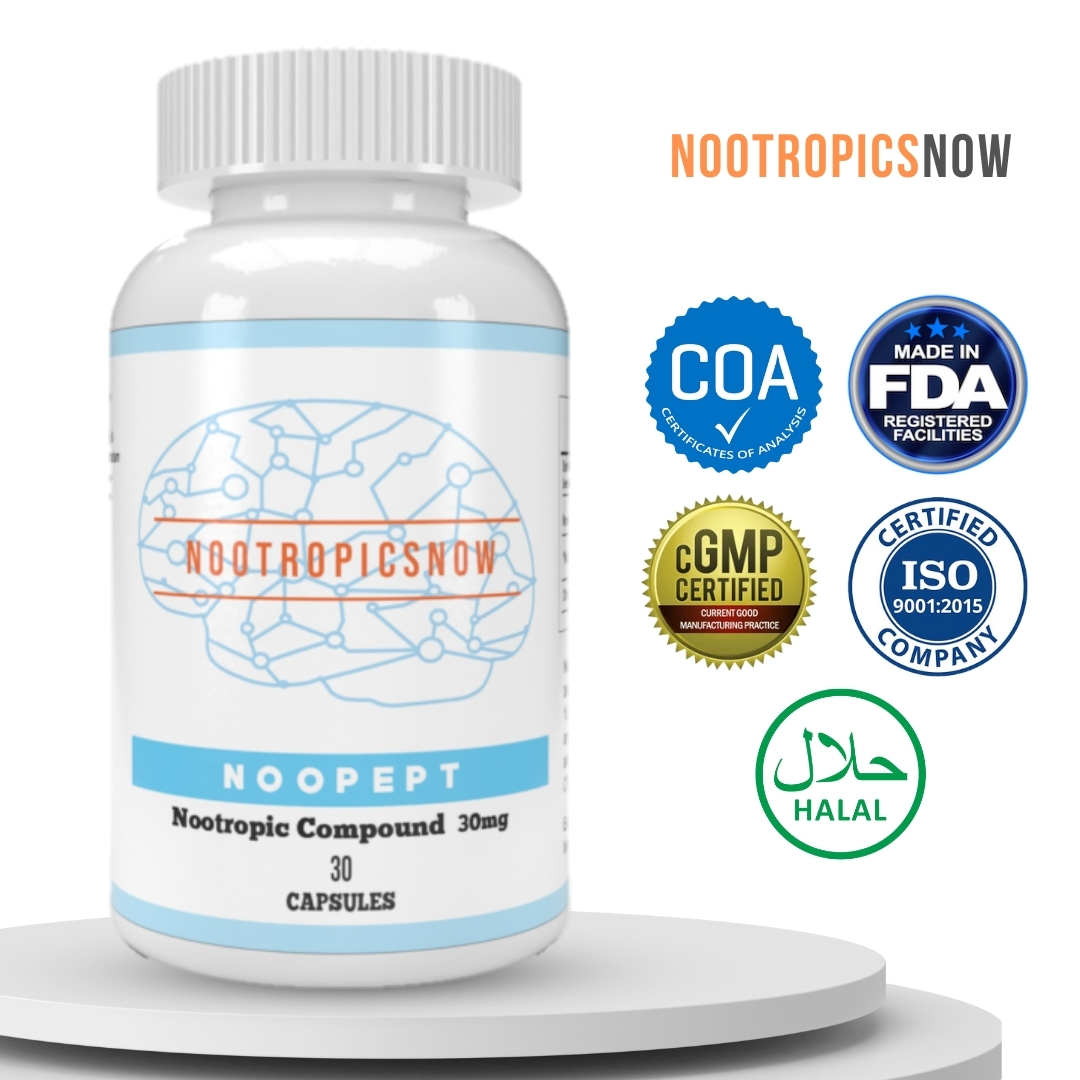Phenylpiracetam: Cognition & Performance

Phenylpiracetam: Cognition and Physical Performance
Phenylpiracetam, a synthetic nootropic derivative of piracetam, has garnered attention for its potential cognitive and physical performance-enhancing effects. Originally developed in Russia in the 1980s to enhance the performance of cosmonauts during extended space missions, phenylpiracetam has since found its way into the hands of students, athletes, and individuals seeking to optimize their mental and physical capabilities. This article delves into the mechanisms, benefits, risks, and practical considerations of using phenylpiracetam.
Understanding Phenylpiracetam
Phenylpiracetam, chemically known as 4-phenylpiracetam, distinguishes itself from its parent compound, piracetam, through the addition of a phenyl group. This structural modification significantly enhances the drug’s ability to cross the blood-brain barrier, leading to more pronounced and rapid effects. In addition, it possesses stimulant properties, which are not present in piracetam.
Mechanism of Action
Phenylpiracetam’s exact mechanism of action is not fully elucidated. However, its effects are believed to stem from interactions with various neurotransmitter systems within the brain. It primarily influences the cholinergic, dopaminergic, and glutamatergic systems.
In short, phenylpiracetam’s multifaceted mechanism of action is thought to contribute to its cognitive-enhancing effects.
Differences from Piracetam
While both phenylpiracetam and piracetam belong to the racetam family, crucial distinctions exist. Phenylpiracetam’s phenyl group enhances its lipophilicity, resulting in improved absorption and blood-brain barrier penetration. This leads to a more potent effect at lower dosages compared to piracetam. Moreover, phenylpiracetam exhibits stimulant properties, providing an energy boost and reducing fatigue, which are not characteristic of piracetam.
Cognitive Benefits of Phenylpiracetam
The cognitive benefits of phenylpiracetam are what makes it attractive. Many users report noticeable improvements in several cognitive domains.
Enhanced Memory and Learning
A primary benefit associated with phenylpiracetam is its capacity to enhance memory and learning. Studies suggest that it can improve both the encoding and recall of information. For instance, research involving individuals with cognitive decline demonstrated that phenylpiracetam improved memory performance and cognitive processing speed. It improves neuronal communication, therefore facilitating quicker encoding of information.
Improved Focus and Attention
Phenylpiracetam is also known for its ability to improve focus and attention. Users often report increased concentration and reduced distractibility. This effect is likely mediated by its influence on the dopaminergic system, which plays a critical role in regulating attention. This allows for longer and more productive study sessions and workdays.
Increased Mental Energy and Motivation
The stimulant properties of phenylpiracetam can lead to heightened mental energy and motivation. By increasing dopamine levels, it may enhance feelings of drive and enthusiasm, making it easier to tackle challenging tasks. It also mitigates cognitive fatigue.
Neuroprotective Effects
Research suggests that phenylpiracetam may possess neuroprotective properties. Studies have indicated it can protect brain cells from damage caused by oxidative stress and hypoxia. These effects could potentially contribute to long-term brain health and resilience.

View Product
Physical Performance Benefits
Beyond its cognitive effects, phenylpiracetam has the potential to enhance physical performance.
Enhanced Physical Endurance
Phenylpiracetam may improve physical endurance and reduce fatigue. It potentially increases the body’s resistance to physical stress, thereby allowing individuals to perform at a higher level for longer periods. Its anti-fatigue effects are particularly sought after by athletes.
Increased Resistance to Cold
Interestingly, phenylpiracetam has been shown to increase resistance to cold exposure. This effect may be beneficial for athletes who train in cold weather conditions. It improves thermogenesis and therefore one’s ability to regulate core body temperature.
Improved Motor Coordination
Some users report that phenylpiracetam enhances motor coordination and reflexes. This could be advantageous in sports that require precise movements and quick reactions. Its effects on dopaminergic and cholinergic neurotransmission likely contribute to motor function improvements.
Dosage and Administration

Finding the optimal dosage of phenylpiracetam is crucial for maximizing its benefits while minimizing potential side effects.
Recommended Dosage Range
The typical dosage of phenylpiracetam ranges from 100 mg to 200 mg per day. It is often administered in two divided doses to maintain consistent effects throughout the day.
Timing and Frequency
Phenylpiracetam is typically taken in the morning and early afternoon to avoid disrupting sleep patterns. Taking it too late in the day might cause insomnia in sensitive individuals. Because tolerance can develop, it is best not to use phenylpiracetam every single day. Cycling its use can help maintain its effectiveness.
Tolerance and Cycling
Tolerance to phenylpiracetam can develop with regular use. Therefore, it is advisable to cycle its use. A common strategy is to take phenylpiracetam for a few weeks, followed by a break of equal duration. This approach helps prevent tolerance and maintain the drug’s effectiveness.
Side Effects and Risks
Although phenylpiracetam is generally well-tolerated, some individuals may experience side effects.

View Product
Common Side Effects
Common side effects of phenylpiracetam include:
These side effects are usually mild and transient.
Less Common Side Effects
Less commonly, some users may experience more severe side effects such as:
These effects are rare but warrant caution.
Contraindications and Interactions
Phenylpiracetam is contraindicated in individuals with:
It may interact with certain medications, such as:
Consulting a healthcare professional before using phenylpiracetam is essential, especially if you have underlying health conditions or are taking medications.
Legal Status and Availability
The legal status of phenylpiracetam varies depending on the country. In the United States, phenylpiracetam is not approved by the FDA for any specific medical use, but it is available for purchase as a research chemical or dietary supplement. However, due to its classification as a performance-enhancing drug, it is banned by the World Anti-Doping Agency (WADA) in professional sports. In some countries, such as Russia, phenylpiracetam is a prescription medication used for treating various neurological conditions.
Purchasing Considerations
If you decide to purchase phenylpiracetam, it is crucial to source it from reputable vendors to ensure quality and purity. Look for vendors that provide third-party testing results to verify the product’s composition and safety. Online vendors and specialized nootropic stores are common sources. Make sure the vendor complies with all regulations.
User Experiences and Anecdotes
Numerous online forums and communities provide user experiences and anecdotes regarding phenylpiracetam. These personal accounts can offer valuable insights into the drug’s effects, dosage, and potential side effects. However, it is important to approach these anecdotes with caution, as individual responses to phenylpiracetam can vary significantly.
Positive Experiences
Many users report positive experiences with phenylpiracetam, including:
These positive outcomes are often attributed to the drug’s ability to modulate neurotransmitter systems in the brain.
Negative Experiences
Some users report negative experiences with phenylpiracetam, including:
These adverse effects highlight the importance of starting with low doses and monitoring individual responses carefully.
Stacking Phenylpiracetam
Stacking phenylpiracetam with other nootropics or supplements is a common practice aimed at enhancing its effects.
Popular Stacks
Popular phenylpiracetam stacks include:
Considerations
When stacking phenylpiracetam, it is important to start with low doses of each compound and monitor individual responses carefully. Not all combinations are beneficial, and some may lead to unexpected side effects. Researching potential interactions and consulting with a healthcare professional is advisable.
Research and Studies
Scientific research on phenylpiracetam is limited, but some studies have investigated its effects on cognitive and physical performance. While some findings support its benefits, more research is needed to fully understand its mechanisms of action and long-term effects. Double-blind, placebo-controlled trials are essential for confirming its efficacy and safety.
Alternatives to Phenylpiracetam
If you’re looking for alternatives to phenylpiracetam, there are several options that offer cognitive and physical benefits. Some popular choices include:
Each alternative has its own set of benefits and potential side effects. It’s essential to research each option thoroughly before deciding.
Summary
Phenylpiracetam is a synthetic nootropic with the potential to enhance cognitive and physical performance. It has shown promise in improving memory, focus, motivation, endurance, and resistance to cold. However, it is not without risks, and side effects can occur. Because of tolerance, regular use is not recommended. Individuals should carefully consider the potential benefits and risks, consult with a healthcare professional, and source the product from reputable vendors. Further research is needed to fully understand phenylpiracetam’s effects and long-term implications. Responsible use and informed decision-making are key to maximizing its potential benefits while minimizing potential risks.
Phenylpiracetam: Cognition and Physical Performance
Phenylpiracetam, a derivative of piracetam, is a nootropic compound renowned for its purported cognitive and physical performance-enhancing properties. Also known as Phenotropil, this substance is more potent than its parent compound, potentially offering a more pronounced impact on focus, memory, and physical stamina. Therefore, this section delves into the nuanced effects of phenylpiracetam on both cognition and physical capabilities.
Cognitive Benefits of Phenylpiracetam
Phenylpiracetam primarily exerts its cognitive effects by influencing several key neurotransmitter systems within the brain. These systems include, but are not limited to, acetylcholine, dopamine, norepinephrine, and glutamate. As a result, users often experience a range of cognitive improvements, from enhanced memory consolidation to increased focus and mental clarity.
Enhanced Memory and Learning
One of the most widely reported benefits of phenylpiracetam is its ability to improve memory and learning. This stems from its interaction with acetylcholine, a neurotransmitter critical for memory formation and recall. Moreover, phenylpiracetam’s modulation of glutamate receptors, especially NMDA receptors, further supports synaptic plasticity, thereby facilitating the learning process. Several studies, predominantly preclinical, have shown that phenylpiracetam can improve both short-term and long-term memory. For instance, animal studies have demonstrated improved maze-solving abilities and object recognition after phenylpiracetam administration. This suggests that the nootropic may enhance cognitive flexibility and the ability to adapt to new situations. In 2023, ongoing studies investigate its efficacy in improving memory recall among older adults.
Increased Focus and Attention Span
In addition to memory enhancement, phenylpiracetam is frequently used to boost focus and attention span. This effect is largely attributed to its influence on dopamine and norepinephrine, two neurotransmitters crucial for regulating attention and motivation. Dopamine, in particular, plays a significant role in the reward system and influences the drive to complete tasks. Norepinephrine, on the other hand, enhances alertness and vigilance. By increasing the levels of these neurotransmitters, phenylpiracetam can help individuals maintain concentration for extended periods, making it particularly useful for tasks requiring sustained mental effort. Moreover, users often report reduced mental fatigue and an improved ability to resist distractions.
Improved Mental Clarity and Processing Speed
Phenylpiracetam can also enhance mental clarity and processing speed. Users often describe a feeling of heightened mental acuity, allowing them to think more clearly and react more quickly. This may be due to phenylpiracetam’s ability to improve communication between neurons, potentially by increasing the efficiency of neurotransmitter transmission or by enhancing neuronal metabolism. The result is faster cognitive processing, which can be beneficial in situations requiring quick decision-making or problem-solving.
Potential Neuroprotective Effects
Beyond its direct cognitive-enhancing effects, phenylpiracetam may also offer neuroprotective benefits. Some research suggests that it can protect brain cells from damage caused by oxidative stress and inflammation. Oxidative stress, resulting from an imbalance between free radicals and antioxidants, is a major contributor to neurodegenerative diseases. By reducing oxidative stress, phenylpiracetam may help prevent cognitive decline and protect against age-related neurological disorders. Furthermore, the nootropic may also promote the survival of neurons under stress, contributing to overall brain health. Further research is needed to fully elucidate these neuroprotective mechanisms and their long-term implications.
Physical Performance Benefits of Phenylpiracetam
In addition to its cognitive benefits, phenylpiracetam is also known for its ability to enhance physical performance. These benefits are multifaceted, impacting energy levels, endurance, and resistance to environmental stressors.
Increased Energy and Reduced Fatigue
One of the most notable physical effects of phenylpiracetam is its ability to increase energy levels and reduce fatigue. This is partly due to its stimulation of dopamine and norepinephrine, which not only improve focus but also enhance motivation and physical drive. Users often report feeling more energetic and less tired, allowing them to engage in physical activities for longer periods. Additionally, phenylpiracetam may improve cellular energy production by supporting mitochondrial function. Mitochondria are the powerhouses of cells, and enhancing their efficiency can lead to increased overall energy levels.
Enhanced Physical Endurance
Phenylpiracetam has been shown to improve physical endurance, making it a popular choice among athletes and fitness enthusiasts. The enhanced energy levels and reduced fatigue contribute to this effect, allowing individuals to push themselves harder and longer during workouts or other physical activities. Moreover, phenylpiracetam may improve oxygen utilization by cells, further enhancing endurance. This could be particularly beneficial for activities that require sustained aerobic effort, such as running, cycling, or swimming. Research in this area suggests that phenylpiracetam can significantly increase the time to exhaustion during strenuous exercise.
Improved Resistance to Cold
Interestingly, phenylpiracetam has been shown to improve resistance to cold. This effect may be related to its ability to enhance thermogenesis, the process of heat production in the body. Thermogenesis is primarily regulated by the sympathetic nervous system, which is also influenced by dopamine and norepinephrine. By stimulating these neurotransmitters, phenylpiracetam may increase heat production, making individuals more resilient to cold environments. This could be particularly valuable for athletes participating in outdoor sports in cold weather or for individuals working in cold environments.
WADA Ban
Due to its performance-enhancing properties, phenylpiracetam is banned by the World Anti-Doping Agency (WADA). This highlights the compound’s potential to provide a competitive advantage in sports, underscoring its effectiveness in improving physical capabilities. Athletes should be aware of this ban and avoid using phenylpiracetam if they are subject to WADA’s regulations. The ban reflects the scientific recognition of phenylpiracetam’s performance-enhancing effects, even if the precise mechanisms are still under investigation.
Dosage and Administration
The optimal dosage of phenylpiracetam can vary depending on individual factors such as body weight, sensitivity, and desired effects. However, a typical recommended dosage is between 100 mg and 200 mg per day, often divided into two administrations to maintain consistent effects throughout the day. It is generally recommended to start with a lower dose and gradually increase it to assess tolerance and minimize the risk of side effects.
Timing
Phenylpiracetam is usually taken in the morning or early afternoon to avoid interfering with sleep. Its stimulating effects can last for several hours, so taking it too late in the day may lead to insomnia. Some users prefer to take it before workouts to enhance physical performance, while others take it before periods of intense cognitive activity, such as studying or working on complex tasks.
Cycling
To prevent tolerance and maintain its effectiveness, it is often recommended to cycle phenylpiracetam. This involves taking it for a certain period, followed by a break. A common cycling schedule is to take phenylpiracetam for 2-3 weeks, followed by a 1-2 week break. This allows the brain to reset and prevents the body from adapting to the effects of the nootropic. Some users also find that cycling helps to reduce the risk of side effects.
Potential Side Effects and Precautions
While generally considered safe, phenylpiracetam can cause side effects in some individuals. Common side effects include headaches, anxiety, insomnia, and irritability. These side effects are usually mild and temporary, but they can be bothersome for some users.
Headaches
Headaches are one of the most frequently reported side effects of phenylpiracetam. This may be due to its stimulation of acetylcholine, which can sometimes lead to muscle tension and headaches. To mitigate this, some users take choline supplements, such as Alpha-GPC or CDP-choline, to support acetylcholine production and reduce the risk of headaches.
Anxiety and Insomnia
Phenylpiracetam’s stimulating effects can also cause anxiety and insomnia in some individuals, especially those who are sensitive to stimulants. To minimize these side effects, it is important to start with a low dose and avoid taking phenylpiracetam late in the day. Combining phenylpiracetam with calming supplements, such as L-theanine or magnesium, may also help to reduce anxiety and improve sleep.
Irritability
Some users report feeling irritable or agitated after taking phenylpiracetam. This may be due to its influence on dopamine and norepinephrine, which can sometimes lead to mood swings. If irritability becomes a problem, reducing the dosage or cycling phenylpiracetam may help to alleviate this side effect.
Contraindications
Phenylpiracetam is not recommended for individuals with certain medical conditions, such as severe liver or kidney disease. It should also be avoided by pregnant or breastfeeding women due to the lack of safety data in these populations. Additionally, it may interact with certain medications, such as anticoagulants and antiplatelet drugs, so it is important to consult with a healthcare professional before taking phenylpiracetam if you are taking any other medications.
Research and Studies
While many of the benefits of phenylpiracetam are based on anecdotal evidence and user reports, some research supports its cognitive and physical-enhancing effects. However, it is important to note that most of the research has been conducted on animals or in small human trials. More large-scale, well-controlled studies are needed to fully understand the effects of phenylpiracetam and to confirm its long-term safety and efficacy.
Animal Studies
Animal studies have shown that phenylpiracetam can improve memory, learning, and physical endurance. For example, one study found that phenylpiracetam improved maze-solving abilities in rats, while another study showed that it increased swimming endurance in mice. These studies provide evidence that phenylpiracetam can have significant cognitive and physical benefits.
Human Trials
Human trials have also shown promising results, although the evidence is limited. One study found that phenylpiracetam improved cognitive function in patients with stroke, while another study showed that it reduced anxiety and improved sleep in patients with depression. These studies suggest that phenylpiracetam may have therapeutic potential for a variety of conditions. However, more research is needed to confirm these findings and to determine the optimal dosage and administration for different populations. Ongoing research in 2024 is focusing on the effects of Phenylpiracetam on cognitive function for students during exam periods.
Legal Status
The legal status of phenylpiracetam varies depending on the country. In some countries, such as Russia, it is approved as a prescription medication for a variety of conditions, including cognitive impairment and depression. In other countries, such as the United States, it is not approved for any medical use and is sold as a dietary supplement. This means that it is legal to purchase and use, but it is not subject to the same regulations as prescription medications. Therefore, it is important to be aware of the legal status of phenylpiracetam in your country before purchasing or using it.
Conclusion
Phenylpiracetam is a potent nootropic that offers a range of cognitive and physical benefits. It can enhance memory, focus, and mental clarity, while also increasing energy, endurance, and resistance to cold. However, it is important to be aware of the potential side effects and precautions, and to consult with a healthcare professional before taking it. While research supports some of its effects, more large-scale studies are needed to fully understand its long-term safety and efficacy. Overall, phenylpiracetam is a promising nootropic that may be beneficial for individuals looking to enhance their cognitive and physical performance, but it should be used responsibly and with caution.





